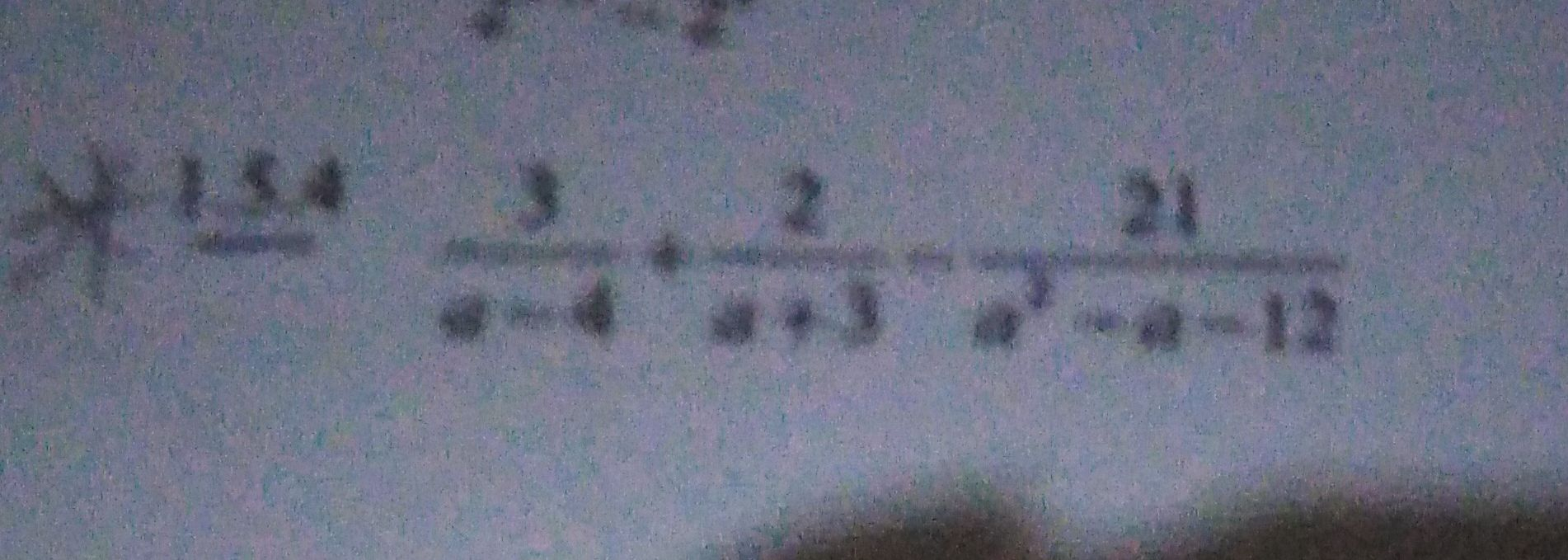AI tutor
Full solution
Q.
- Factor Denominator: First, we need to factor the denominator of the third term to see if there are common factors with the other denominators.The third term's denominator is a quadratic expression: .We look for two numbers that multiply to and add up to (the coefficient of the middle term).The numbers and satisfy these conditions.So, we factor the quadratic as .
- Identify Common Denominators: Now we have the expression with common denominators identified: rac{3}{a-4} + rac{2}{a+3} - rac{21}{(a-4)(a+3)}We can now combine these fractions over a common denominator, which is .
- Combine Fractions: To combine the fractions, we adjust the numerators to have the common denominator:
- Adjust Numerators: Next, we distribute the numerators and combine like terms:
- Simplify Numerator: Now we simplify the numerator by combining like terms:So the expression becomes:
- Factor Numerator: We check if the numerator can be factored further to potentially cancel out any factors with the denominator.The numerator is , which can be factored as .
- Cancel Common Factor: Now we have:We see that the term in the numerator and denominator can be canceled out, as long as is not equal to (since division by zero is undefined).
- Final Simplified Form: After canceling out the common factor, we are left with: This is the simplified form of the original expression, assuming to avoid division by zero.

